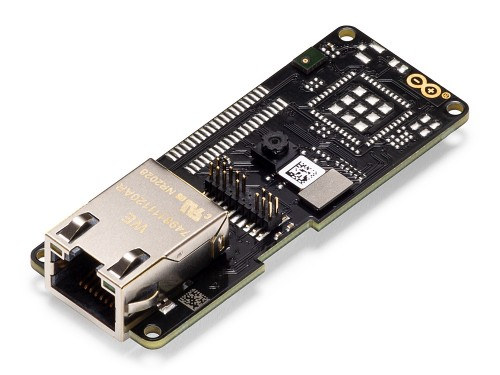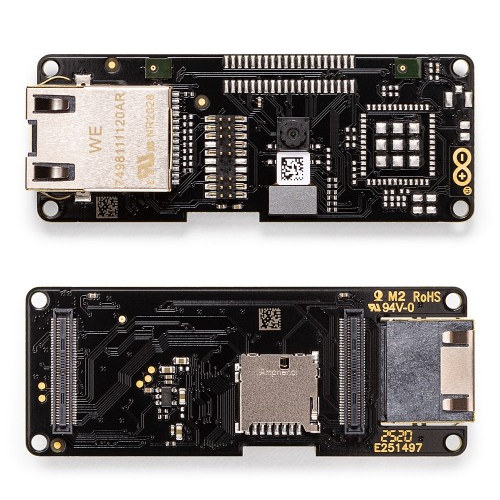[Update January 28, 2021: The LoRa version of Portenta Vision Shield is now available]
Announced last January at CES 2020, Arduino Portenta H7 is the first board part industrial-grade “Arduino Pro” Portenta family. The Arduino MKR-sized MCU board has plenty of processing power thanks to STMicro STM32H7 dual-core Arm Cortex-M7/M4 microcontroller.
It was launched with a baseboard providing access to all I/Os and ports like Ethernet, USB, CAN bus, mPCIe socket (USB), etc… But as AI moves to the very edge, it makes perfect sense for Arduino to launch Portenta Vision Shield with a low-power camera, two microphones, and a choice of wired (Ethernet) or wireless (LoRA) connectivity for machine learning applications.
Portenta Vision Shield key features and specifications:
- Storage – MicroSD card socket
- Camera – Himax HM-01B0 camera module with 324 x 324 active pixel resolution with support for QVGA
- Image sensor – High sensitivity 3.6μ BrightSense pixel technology
- Microphone – 2x MP34DT05 omnidirectional microphones
- Connectivity
- Ethernet version- 10/100M Ethernet RJ45 jack
- LoRa version – Same Murata CMWX1ZZABZ LoRa module as found on Portenta H7 baseboard
- Dimensions – 66 x 25 mm
- Weight – 11 grams (Ethernet version)

Arduino also had a software announcement to go along with Portenta Vision shield hardware, as the company has teamed up with OpenMV to make the OpenMV IDE compatible with the new shield. Developers can use the IDE to easily program the board using MicroPython and leveraging AI/ML algorithms available via the platform. You’ll find the latest Portenta compatible OpenMV IDE on Github together with samples.
The Ethernet version of Arduino Portenta Vision Shield can be ordered now for $47.15, while the LoRa version can be purchased for $63 plus taxes and shipping.
Via Arduino Blog.

Jean-Luc started CNX Software in 2010 as a part-time endeavor, before quitting his job as a software engineering manager, and starting to write daily news, and reviews full time later in 2011.
Support CNX Software! Donate via cryptocurrencies, become a Patron on Patreon, or purchase goods on Amazon or Aliexpress




